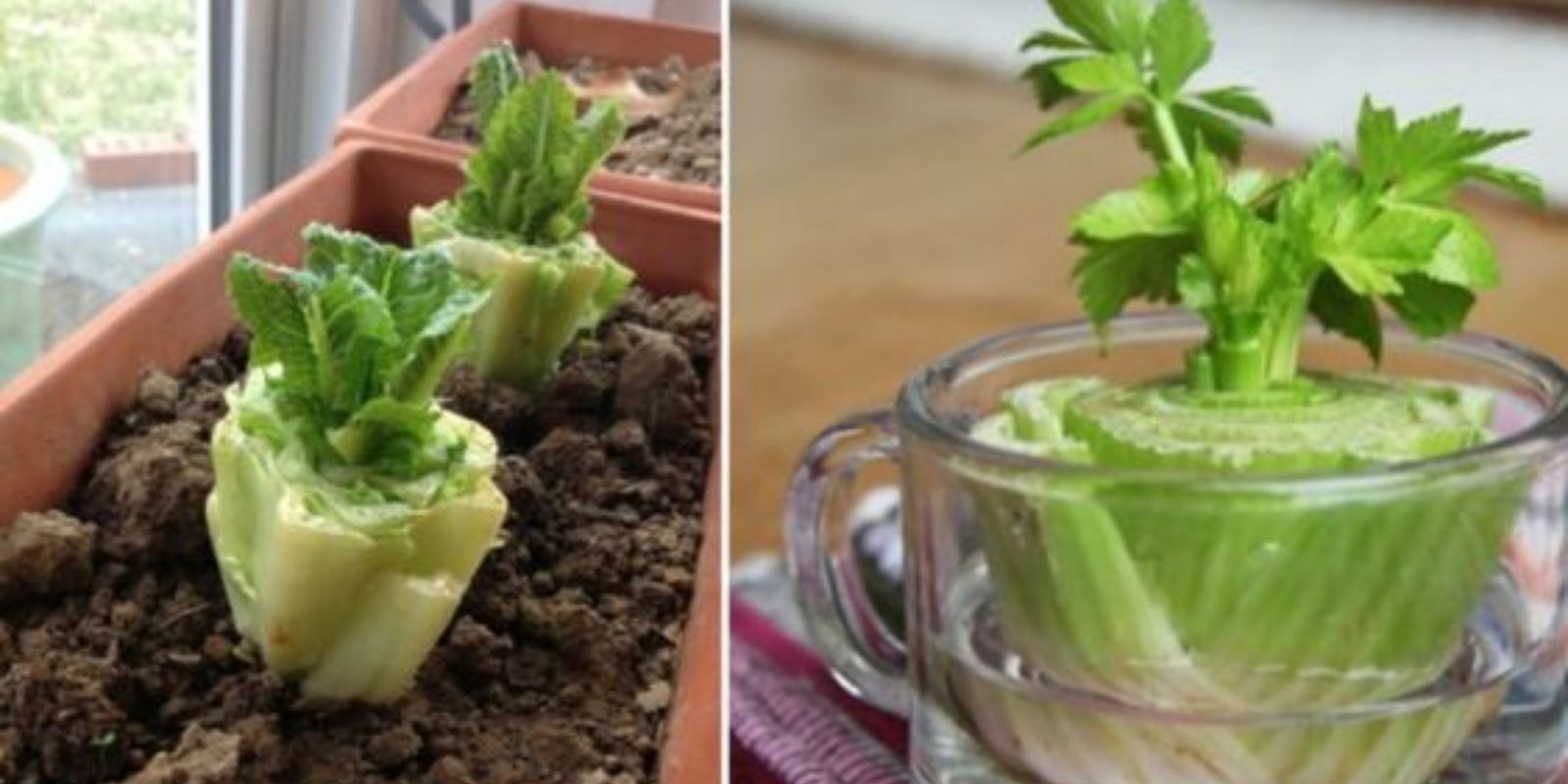Regrowing vegetables from kitchen scraps is a popular trend that combines sustainability with gardening. It’s an exciting way to reduce waste and enjoy fresh produce right from your kitchen. However, the effectiveness of this method can vary depending on the type of vegetable and the care you provide. In this article, we’ll explore the ins and outs of regrowing veggies from scraps, uncover the truth behind the process, and provide detailed steps to help you succeed.
Introduction
Imagine being able to turn your kitchen scraps into a lush, green garden. The concept of regrowing vegetables from scraps is both intriguing and environmentally friendly. It’s an excellent way to make the most of your groceries, save money, and reduce your carbon footprint. While some vegetables can easily regrow from scraps, others may require more care and attention. Let’s delve into the world of regrowing vegetables and discover which ones are best suited for this process.
Step-by-Step Guide to Regrowing Vegetables from Scraps
- Select Suitable Veggies Not all vegetables are created equal when it comes to regrowing from scraps. Some of the best candidates include green onions, celery, lettuce, bok choy, leeks, garlic, and herbs like basil, cilantro, and mint. These veggies tend to have a high success rate and can produce edible results relatively quickly.
- Prepare the Scraps Start by preparing the vegetable scraps for regrowth. For most veggies, you’ll need to cut the base or root end, leaving about an inch of the root intact. This portion will be the foundation for new growth.
- Place in Water Submerge the cut base in a shallow dish of water. Ensure that the roots are covered, but avoid fully submerging the entire scrap to prevent rot. Use a clear container if possible, so you can easily monitor root development.
- Change Water Regularly To keep the water fresh and prevent mold growth, change it every few days. This step is crucial for maintaining a healthy environment for your regrowing vegetables.
- Provide Light Place the dish in a spot with indirect sunlight. A windowsill that receives a few hours of sunlight each day is ideal. Avoid placing the scraps in direct, harsh sunlight, as this can cause them to dry out.
- Monitor Growth Within a few days to a week, you should start to see new growth emerging from the scraps. Green onions, for example, will sprout new green shoots, while lettuce and celery will develop fresh leaves.
- Transfer to Soil Once the roots have developed and new growth is visible, it’s time to transplant the veggie scraps into soil. Fill a pot with well-draining soil and create a small hole for the plant. Gently place the scrap into the soil, ensuring the roots are covered and the new growth is above the soil line.
- Care for Your Plants Water the newly transplanted veggies regularly, keeping the soil moist but not waterlogged. Provide adequate sunlight, ideally a few hours of direct sunlight each day. As the plants grow, you may need to fertilize them with a balanced, organic fertilizer to ensure they receive the necessary nutrients.
Tips for Success
- Choose Healthy Scraps: The healthier the scrap, the better the chances of successful regrowth. Avoid using scraps that are moldy, wilted, or severely damaged.
- Be Patient: Some vegetables regrow quickly, while others may take longer to establish. Be patient and give your plants the time they need to develop.
- Experiment: Don’t be afraid to experiment with different vegetables. Some may surprise you with their regrowth potential.
- Provide Adequate Light: Light is essential for photosynthesis and healthy growth. Ensure your regrowing veggies receive enough light to thrive.
- Monitor Water Levels: Keep an eye on the water levels in the initial stages of regrowth. Ensure the roots are always in contact with water, but not submerged completely.
The Benefits of Regrowing Vegetables from Scraps
Regrowing vegetables from scraps offers several benefits beyond just having fresh produce at your fingertips. Here are some advantages of this sustainable gardening practice:
- Reduces Food Waste: By using kitchen scraps, you reduce the amount of organic waste that ends up in landfills. This practice helps decrease methane emissions, a potent greenhouse gas produced by decomposing food waste.
- Saves Money: Growing your own vegetables from scraps can significantly cut down on your grocery bills. Over time, you’ll spend less on produce and enjoy the satisfaction of homegrown food.
- Eco-Friendly: Regrowing veggies contributes to a more sustainable lifestyle. It reduces the demand for commercially grown produce, which often requires extensive resources and transportation.
- Educational: This process is a fantastic educational tool for both children and adults. It provides insight into plant biology, growth cycles, and the importance of sustainability.
- Convenience: Having a continuous supply of fresh herbs and vegetables at home is convenient for cooking. You can simply snip what you need, reducing the need for frequent trips to the store.
The Truth About Regrowing Vegetables
While regrowing vegetables from kitchen scraps is rewarding, it’s important to set realistic expectations. Not all veggies will regrow to their full original size or flavor. For instance, regrown lettuce and celery may not form tight heads like store-bought varieties, but their leaves will still be edible and nutritious.
Additionally, some plants may require more care and optimal growing conditions to thrive. For example, herbs like basil and mint can quickly regrow in water but may need proper soil and sunlight to produce a substantial harvest.
Conclusion
Regrowing vegetables from kitchen scraps is a delightful and eco-friendly gardening project. It allows you to reduce waste, save money, and enjoy fresh produce at home. By selecting suitable vegetables, providing proper care, and being patient, you can successfully regrow a variety of veggies from scraps. Embrace this sustainable practice, experiment with different plants, and relish the joy of homegrown greens. Start regrowing your kitchen scraps today and witness the magic of new life sprouting from what would otherwise be discarded! 🌱✨

